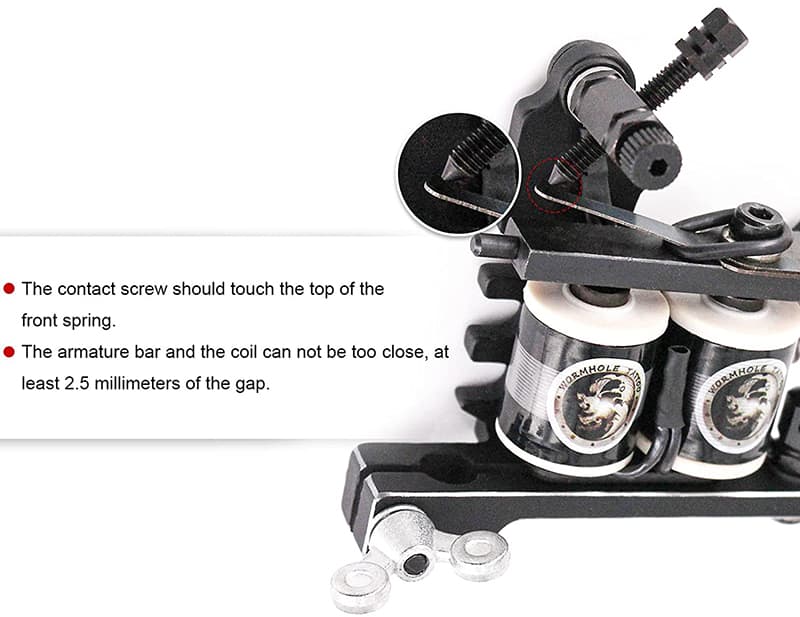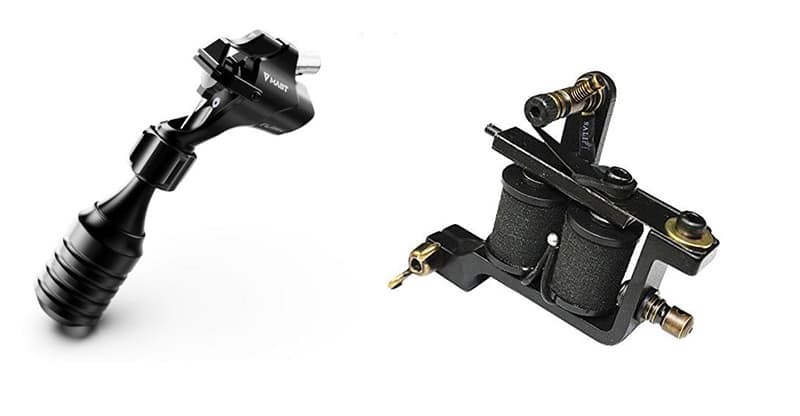A Professional Tattoo Artist’s Perspective
Tattooing is an art form that requires precision, skill, and the right tools. Among the most important tools in a tattoo artist’s arsenal are the liner and shader tattoo machines. These machines serve different purposes and are essential for creating stunning tattoos. In this article, we will explore the differences between shader and liner tattoo machines, their uses, and how to choose the right machine for your needs.The Basics of Tattoo Machines
First, let’s break down the general differences between a liner and a shader in the context of how these two types of tattoo machines work.Liner Tattoo Machines
Liner tattoo machines are designed to create clean, precise lines. They are typically used to outline a tattoo design and create fine details. Liner machines have a shorter contact gap and use smaller needles, which allows for more precision.| Characteristic | Liner Tattoo Gun |
|---|---|
| Needle Size | Smaller needles |
| Contact Gap | Shorter contact gap |
| Speed | Faster |
| Purpose | Outlining and detailing |

Shader Tattoo Machines
Shader tattoo guns are designed for filling in large areas of color and creating gradients. They are typically used to add shading and color to a tattoo design. Shader machines have a longer contact gap and use larger needles, which allows for a softer, more diffused effect.| Characteristic | Shader Machine |
|---|---|
| Needle Size | Larger needles |
| Contact Gap | Longer contact gap |
| Speed | Slower |
| Purpose | Shading and coloring |
Liner vs. Shader Coil Tattoo Machine
Typically, these machines have one to three electromagnetic coils, but most commonly two. These coils generate the magnetic field required to move the armature bar and the attached needles.
Front and Rear Springs control the movement of the armature bar. The front spring also acts as an electrical contact. Liners usually have a shorter and stiffer front spring, which makes the machine run faster. While shader machines generally have a longer, more flexible front spring, leading to a slower and softer operation.
Adjustable Contact Screw touches the front spring and controls the machine’s electrical flow, affecting the machine’s speed and power. The gap between the front spring and the contact screw is shorter in liner machines, resulting in a faster and harder hit. The gap between the front spring and the contact screw is typically larger in shader machines, allowing for a softer hit.
There is also a difference in the tattoo needles: liner machines often use round groupings of needles to produce clean and precise lines; shader guns use wider needle groupings, often in magnums or flats, to cover more skin area and produce softer shading.

Thus, coil tattoo guns are usually purchased in two items, separate liner and separate shader. This gives you the opportunity to maximize the quality of tattoo performance and realize your tattoo designs with perfect accuracy.
Shader vs. Liner Rotary Tattoo Machine
Rotary tattoo machines have become increasingly popular in recent years due to their versatility, smooth operation, and reduced maintenance needs. Like their coil counterparts, rotary machines are also categorized into shaders and liners, each tailored for specific tattooing tasks.
The main criterion by which we distinguish whether a rotary machine is for contouring or for color wrapping is the needle stroke. Essentially, it refers to the distance covered from the beginning to the end of the eccentric movement. The longer this distance, the more power the needle accumulates for its impact.
Long strokes, or robust strokes, are typically associated with “harder” tattooing styles such as traditional tattoo style, tribals, and blackwork tattoos. For these techniques, where there’s a need to drive larger needle groupings into the skin, a longer stroke of 4.2 mm or more is required.
A stroke of 3.5 mm is considered versatile for lining and shading. For creating gradients and fine lines, tattoo artists might opt for a 3.2 mm stroke. Anything shorter is primarily reserved for permanent makeup.
In essence, if your great tattoo machine allows adjustable stroke lengths, you can seamlessly switch between different tattooing styles without needing multiple devices. Seasoned tattoo artists, once they’ve honed their specific style, often gravitate towards machines tailored for their preferred tattooing technique.
Choosing the Right Machine
When choosing a tattoo machine, it’s important to consider the type of work you will be doing. If you primarily focus on line work and detailing, a liner machine is essential. If you prefer to work with shading and coloring, a shading machine is a better choice. Many professional tattoo artists have both types of machines in their toolkit to ensure they can handle any tattoo design.Factors to Consider
When selecting a tattoo machine, consider the following factors:- Needle Configuration: Liners typically use round needle configurations, while shaders use magnum or flat configurations.
- Machine Weight: Lighter machines are easier to handle for extended periods, but heavier machines may provide more stability.
- Voltage: Different machines may require different voltage settings. Ensure your power supply can accommodate the machine you choose.
- Brand Reputation: Choose a reputable brand known for producing high-quality, reliable machines.

